#northern eastern alps
Text
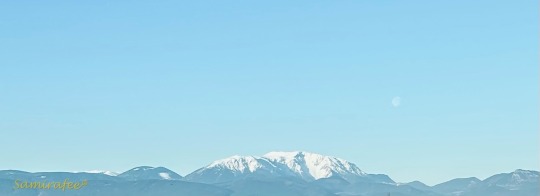
#NORTHERN EASTERN ALPS🏔️RAX-SCHNEEBERG GROUP & WANING MOON🌖
@samirafee
#source: samirafee#own picture#photographers on tumblr#nature#alps#northern eastern alps#rax#schneeberg#waning moon#january 2024
8 notes
·
View notes
Photo

Legions of Noricum, Raetia & Dacia
The provinces Noricum, Raetia, and Dacia served as a buffer protecting Roman Empire against any possible outside threat. However, the region posed several internal problems for Rome: Pannonia and its ally Dalmatia rebelled against Roman occupancy, causing a three-year war, and Moesia was invaded by the Dacians during the reigns of both Domitian (r. 81-96 CE) and Trajan (r. 98-117 CE).
Lastly, during the 2nd and 3rd centuries CE, the region was repeatedly invaded by the Goths, Alemanni, and Marcomanni. While Noricum, Raetia, and Dacia provided a buffer between Rome and the Germanic tribes to the north, in time, they succumbed to the invaders they were supposed to keep out.
The Province of Noricum
Located in the eastern Alps between Raetia and Pannonia, its ideal location south of the Danube and rich deposits of iron ore and gold made Noricum a valuable asset to the coffers of the Roman Empire. The discovery of gold in the 2nd century BCE had drawn Roman settlers into the region only to be quickly expelled by the native Taurisci. However, Roman merchants continued to conduct business through small trading settlements. Always viewed as an ally, the region was finally conquered in 16 BCE during the reign of Roman emperor Augustus (r. 27 BCE to 14 CE). However, unlike other provinces, it did not receive a legion of its own – Legio Italica II – until the reign of Marcus Aurelius (161-180 CE). The province was later divided into two – Noricum Ripensis and Noricum Mediterranean – by Diocletian (284-305 CE). It was invaded by northern Germanic tribes and abandoned in the 5th century CE.
Continue reading...
25 notes
·
View notes
Text
The European woodlands are a series of mostly bamboo forests in Central, Western, Southern and Northeastern Europe.

These bamboo species have developed fleshier fruits and more robust branches, in order to support macaque descendants and the bigger parrots that inhabit their canopies and disperse their seeds.
The bigger herbivores of these forests are the Elepharrhinids, usually smaller and furrier than their grassland counterparts, and the biggest of the running hares, that browse on the lower canopy and battle for mates with their four facial horns.
Other than macaques and parrots, some of the canopy’s most common herbivores are the Sciuromiridae, red squirrel descendants that reached the size of modern New World Monkeys. They aren’t as social, don’t have the same good eyesight, and are still more relying on hearing and smelling, still more similar to lemurs and early primates than to simiiforms.
They’re preyed upon by arboreal mustelids descended from martens, smaller cats, eagle sized kestrel descendants and scavenging kites.

The apex predator of these forests is the Fellimus cambiulus, a close relative to the grasslands’ Fellimus alexandrae, its bigger relative. It hunts the biggest forest herbivores, macaque and squirrel descendants, smaller carnivores and birds. It’s range extends to most of Europe, except for islands, the Fennoscandian peninsula, northern Russia and the tallest mountains, and into Asia, up to the eastern coast of the Caspian sea. Canids became pretty abundant predators too, with pack hunting golden jackals descendants being pretty widespread across the continent, and being capable of taking down prey much larger than themselves.

Many forests rise along the courses of rivers, which are too home to rich and diverse ecosystems. Many of the freshwater fish species diversified into various forms, like big predatory trouts and catfish, and paddlefish sturgeons. Semiaquatic vertebrates diversified too, with the invasive nutrias becoming bigger, and reaching the size of really large boars, and in some species becoming bigger than hippos.
Vermins became as big as otters, and aquatic birds diversified too, with Cetti’s warbler descendants establishing a family of stork like waders, the Ciconicettidae.
With the warmer climate crocodiles expanded into Europe, although they’re still limited by latitudes, and stop around Southern France, the Carpathians and the Alps.
#spec evo#spec bio#speculative evolution#speculative biology#artwork#digital art#worldbuilding#epigene period#future earth#future evolution
42 notes
·
View notes
Photo

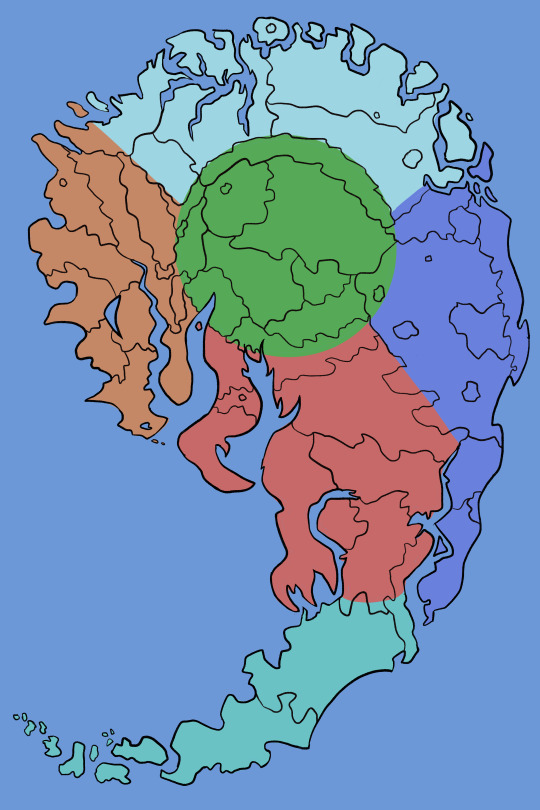
So, finally, we’ve finally got some semblance of a map for Legacyverse Ninjago. It takes inspiration from like, every map iteration I could possibly find (the obvious iconic dragon-shaped one, the one from Shadow of Ronin, the Ninjago Movie’s map, etc.) buuut everything’s been shuffled a bit to fit my own purposes >:3 (the left side is a base map, the right side is how each Province compares to the others)
Take everything you know about Ninjago’s locations...and throw ‘em in a fire! (Also buckle up cuz it’s a long one)
General Info:
So after Time Began and the island of Ninjago was split in half, only the Light Island persisted, and with more unknown, unbalanced forces out there that not even the FSM could fend against all at once, the FSM called upon the help of the friends who taught him the Four Core Elements to help him watch over all corners of Ninjago, along with sending out members of the Elemental Alliance to watch over things. Each of those “corners” was divided off into a Province, with some of those Provinces being more populated, while others were much harder to inhabit due to the terrain. But, over time, people began to grow and adapt, and in this fine 21st Century, there’s a variety of people living all over the island!
Due to the variating wide-spread nature of Elemental Descendants, some places have specific cultures surrounding the Elements. This plays into the spoken languages as well. New-Form Ninjagon is the universal language in all regions (which is a blend between the symbols of Old-Form Ninjargon yet spoken similarly to English), but individual places have their own secondary languages as well. Any areas that aren’t explicitly labeled are either unexplored, uninhabited, disputed over which Province it fully belongs to and thus have no claimed name, or too uninteresting to qualify as a full landmark.
Northern Province-
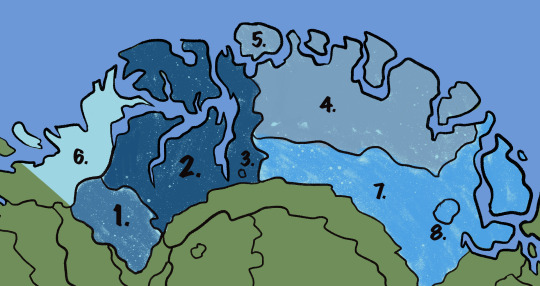
Overview: The Northern Province encompasses the uppermost parts of Ninjago, consisting of mainly cold, snowy climates that range from dense forests to frigid fjords to frozen peaks. At the very crown of Ninjago in the Northern Ocean sits the Ice Fortress, where the North’s Guardian Eirlys once kept the Shuriken of Ice under tight wraps. Not a lot of people live in these parts, not going much farther than Birchwood and the outer Glacier Barrens, but if avoiding civilization is your goal, then this is your place to go!
Guardian: Eirlys (The White Wolf)
Common Elemental Descendants: Nature, Smoke, Sound, Mind, (Ice)
Secondary Languages: Mongolian, Welsh, Dutch, Scottish Gaelic, Yupik
Birchwood Forest
Glacier Barrens
Hypnobrai Tomb
Frozen Wastelands
Ice Fortress
Shintaro (Shares with West Province)
Wailing Alps
Blind Man’s Eye
Western Province-

Overview: The Western Province consists of the mountainous and rugged regions to the island’s west. While harboring much less dangerous areas than the other Provinces (save for the Desert of Doom), and is the second-most populated Province, the harsh and unpredictable terrain still makes it difficult to settle outside of the region’s main cities. In the westernmost point sits the Caves of Despair, where Ruamoko primarily keeps to himself while guarding the Scythe of Quakes, until he is needed elsewhere.
Guardian: Ruamoko (Gorilla of the Quake)
Common Elemental Descendants: Nature, Shadow, Metal, Gravity, (Earth)
Secondary Languages: Somalian, Russian, Indonesian, Turkish, Hindi
Western Range
Caves of Despair
West Haven
Mountain of a Million Steps / Constrictai Tomb
Jamanakai Village
Wildwood
Blackwood Forest
Metalonia
Shintaro Mines / Heart of the Mountain
Desert of Doom
Echo Canyon
Glimwillow Woods
Holy City of Domu
Eastern Province-

Overview: Primarily consisting of either scorching desert or places constantly pestered by storms, the Eastern Province doesn’t have much in a way of population, but the space is used for several significant locations, such as an amusement park, a junk yard, a prison, and a external power station for Ninjago City. Within the Thunder Belt on the far east edge of the region sits the ruins of an ancient floating city, from within Tawhiri watches over the area with a...temperamental fist.
Guardian: Tawhiri (Octopus of the Tempest)
Common Elemental Descendants: Nature, Mind, Sound, Speed, Light, Gravity, (Lightning)
Secondary Languages: Arabic, Irish Gaelic, Latin, German,
Haunted Hill / Temple of Airjitzu
Sea of Sand
Mega Monster Amusement Park
Anacondrai Tomb
City of Ouroboros
Scrap N’ Junk Yard
Kyptarium Prison
Thunder Belt
Floating Ruins / Lightning Temple
Crashcourse / Scattered Canyon
Stiix
Dyer Island
Wind Farms Power Station
Southern Province-
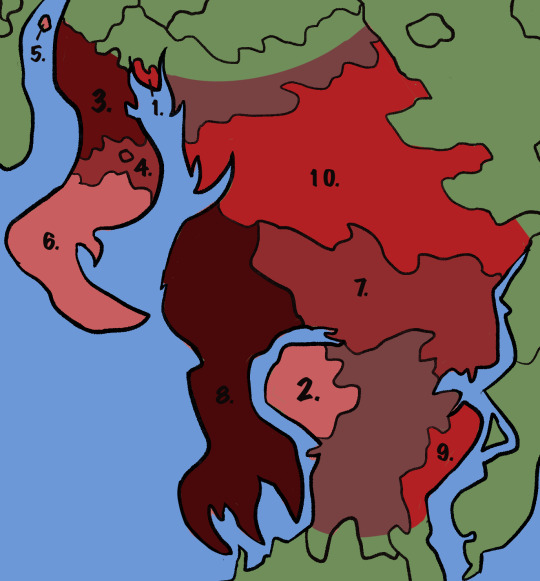
Overview: More populated than the East and North but not quite as much as the West and Central, the Southern Province is mostly home to lands that are extremely fertile and rich with resources, due to being almost completely surrounded by water. But there’s also its share of places that could kill a man just by visiting them (such as Torchfire Mountain, the Toxic Bogs, or even the remains of Hono Mizu City). From a small, volcanic island just off the coast of Central’s Ninjago City, there sits not just a Shark Army Base, but also a Fire Temple, and within that temple the Golden Lion Vulcanell once kept the Sword of Fire safely guarded in his possession.
Guardian: Vulcanell (The Golden Lion)
Common Elemental Descendants: Smoke, Shadow, Poison, Light, Amber, (Fire)
Secondary Languages: Mandarin, Japanese, Italian, Bengali, Thai
Ignacia
Coastal Village
Forest of Tranquility
Cemetery of Souls / Fangpyre Tomb
Volcanic Island / Fire Temple / Shark Army Base
Spirit Coves
Toxic Bogs/ Venomari Tomb
Torchfire Mountain Range
Hono Mizu (Northern Half)
Rainbow Valley / Village in the Valley
Central Province-

Overview: Due to housing the island’s capital and despite containing some of the deadliest areas of Ninjago, Central Province houses the majority of Ninjago’s population within Ninjago City alone. Traveling far beyond Central can be exceedingly difficult, as it requires going through either the west’s mountains, the east’s desert, the north’s canyons and cold, or the southern bays (unless you have a flying ship or magically whipped up mech). Not only do people not often travel in or out, but neither does information, meaning that even though some outer places have knowledge of the Elemental Compass (such as Metalonia, Stiix, Hono Mizu, etc), nearly everyone within Central does not...despite the ironic fact that a majority of the Elemental Masters live within the city. Central Province currently does not have a Guardian, and Master Wu has been doing his best to watch over it in the previous Guardians’ stead.
Guardian: Dragon Genesis / Great Devourer (Order of the Ouroboros)
Common Elemental Descendants: Surprise, Nature, Smoke, Shadow, Form
Secondary Languages: Old-Form Ninjargon, English, French, Portugese
Mountain of Impossible Height / Monastery of Spinjitzu
Ninjago City
Darkley's Boarding School
Hiroshi’s Labyrinth
Primeval’s Eye
Fortress of Fortitude
Vermillion Swamps
Corridor of Elders
Aquatic Archipelago-

Overview: At the very bottom of Ninjago sits the Aquatic Archipelago, the last remaining trace of the once only landmass within the Realm of the Endless Sea. This region doesn’t seem to have a Guardian, but ancient texts from Before Time Began indicate that the FSM left the archipelago to its own devices as a sign of respect for the beings that already lived there, along with the winged-leviathan that formerly ruled the realm...although that beast’s name has since faded with time. Housing the Golden Peaks from which the rest of Ninjago was born form, and the strip of islands housing the protectors/keepers/worshippers of a very ancient, supposedly sleeping sea serpent, those who do still live here are either descendants of those who worshipped Wind and Water, or those who braved through the seas and/or the Toxic Bogs of the south to found the Vagabond Plains (which is where Jesse’s grandmother is from).
Guardian: Wojira (Sleeper of the Deep)
Common Elemental Descendants: Water, Amber (Wind)
Secondary Languages: Spanish, Greek, Korean, Tagalog, Swahili
Tartarus Trench + Temple of the Sea
Hono Mizu (Southern Half)
Chen’s Island
Storm Belt
Boiling Sea
Merlopia
Golden Peaks
Vagabond Plains
(Tiger Widow Island + The Keeper’s Island are also in this region, but are not on this map due to...not being on any maps normally haha)
I do have plans to do layouts for Ninjago City and the Dark Island eventually, but shh...I need a nap now...
#ninjago#the lego ninjago movie#tlnm#the ninja legacy whip#legacyverse#locations#info tag#content tag#works of mine#art of mine#art tag#and now you see why this took so long#*flops dramatically*#elemental compendium
195 notes
·
View notes
Note
So... I've seen a couple asks (and maybe your own answers??) comparing real world places to places in Tamriel (ex: Finland, Eastern Skyrim, I think, from your last ask).
If you don't mind, what real world continent/country do you think would best fit each country in Tamriel?? Do you understand what I mean??
I ask that last bit, because this doesn't make full sense to me even :']
Hi! That absolutely makes sense to me in terms of what they look like geographically (if I have interpreted this right). I am fairly well-travelled but I haven't been to a large portion of the US, South America, Eastern Europe (besides Serbia) or Africa, so I will answer this as best I can based on what I know from experience/have seen on documentaries (I hope this list isn't controversial omg)!
Coastal High Rock: Cornwall, Scotland, and Wales
Inland High Rock: Southeast England, southern France
Wrothgar: Alaska, Colorado, Canada
Northern Skyrim: Iceland
Western Skyrim: US mountain regions (e.g. California, Colorado), Norway, Aotearoa (New Zealand)
Eastern Skyrim: Norway, Finland, Northern Sweden
Southern Skyrim: Sweden, Denmark, Germany, Poland
Coastal Hammerfell: Turkey, Morocco
The Alik'r: Algeria, Tunisia, Arizona
Northern Cyrodiil: Switzerland and Alps
Central Cyrodiil: Italy (Rome and surrounds)
Southern Cyrodiil: South Africa, Queensland (Australia)
Black Marsh: Indonesia, Philippines, Fiji
Northern Elsweyr: Myanmar, Mongolia, Australian Northern Territory
Southern Elsweyr: Indonesia, Thailand, Malaysia
Valenwood: Brazil, Venezuela, Papua New Guinea
Vvardenfell: Hawaii
Solstheim: Svalbard (Norway)
Summerset: Greece, coastal Italy, Portugal, Croatia
Let me know if there's anywhere I missed! Hope this list doesn't cause mass strife, please no kill! ~Tal
64 notes
·
View notes
Text
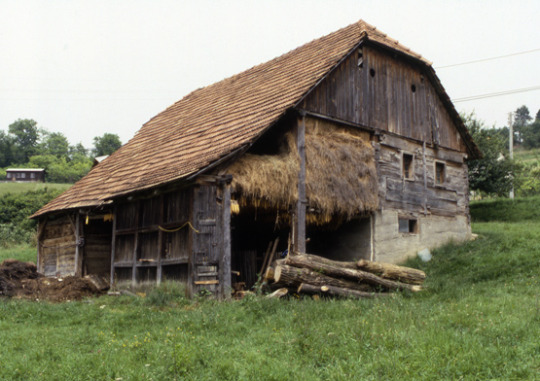
Wooden Barn with haydrying racks
Zagorska Sela, Croatia
Zagorska Sela is a village in northern Croatia in the Hrvatsko Zagorje region that sits in the southern foothills of the Julian Alps. The eastern side of the village and municipality is formed by the Sutla River that is the border between Croatia and Slovenia. The Sutla flows into the Sava river. The wooden barn and haydrying structure rests on a masonry base and contains open space for housing animals and equipment. The upper level provides open space to dry hay and closed work space.
(photo 1988)
19 notes
·
View notes
Text
Cold winter: Krampus
KRAMPUS
Category: Alpine folklore
Nowadays everybody seems to know Krampus in one way or another thanks to media coverage… But the American view of the Krampus tend to get REALLY weird. So let’s return to what actually is Krampus.
Krampus is not a “Christmas” character but a Saint Nicholas character. The Feast of Saint Nicholas was basically “Christmas before Christmas”: in certain parts of Europe, on the 6th of December, Saint Nicholas’s day is celebrated as a holiday for children, where good little boys and girls receive gifts from Saint Nicholas himself (who IS the ancestor of Santa Claus, as the Dutch version of Saint Nicholas, Sinterklaas, was brought to the US and there slowly turned into the American Santa Claus). Saint Nicholas either arrives on the morning of the 6th, or gives the gifts during the night from the 5th to the 6th. So he is the European Santa Claus. And he has a “companion” – as most “European Santa Clauses” do. A companion in charge of punishing naughty little children, while the other is the gift-giver ; a scary or threatening figure to complement the nice and sweet one. Saint Nicholas’s companion, in Central and Eastern Alpes, tends to be Krampus.
Krampus is a hairy fanged and horned demonic figure: covered in a black fur he has cloven hooves, a long pointy tongue that is always out of his mouth, and he usually carries chains (that he likes to thrash around – sometimes they’ll have bells on them to make even more noise). Those chains aren’t so much a “tool” or “weapon” of Krampus as rather his bindings… Indeed, these chains are wrapped around the demon, and once were held by Saint Nicholas: it is a manifestation of the theme of “The Saint binding the Devil” that exists in many different myths and figures across Europe. Saint Nicholas, the power of good and God, defeated and enslaved the demon/devil Krampus. Now they work in a duo: where Saint Nicholas gives modest and humble gifts like chocolate, walnuts, oranges, dried fruits and other “old-fashioned” gifts, Krampus gives an “old-fashioned” punishment: whipping, or beating. Krampus usually does that with birch rods (hence the name of his specific type of punishment, “birching”). This bundle of branches is swats children with is called the “Rute”. It isn’t however the only mean Krampus has to punish naughty children: he also usually carries with him a big bag or a large basket: in it, he usually places disobedient and nasty children to be taken away. What happens to these kids? Legends do not agree. Some say Krampus is a child-eater, others claim he rather drowns the kids he takes away. Sometimes he will drop his prisoners into Hell, from which he comes from, while other times the children simply disappear away and are never seen again.
When I say that the Krampus is part of “Central and Eastern Alpine folklore”, don’t think that it means a few little countries. The Alps cover a LOT of European countries, and the Krampus exists in a LOT of European countries. Eight different areas are concerned with the existence of this figure: Germany (especially Bavaria), Austria, the Czech Republic, Slovakia, Slovenia, Hungary, Croatia, and the northern part of Italy (including things such as Trento or the South Tyrol). And even when Krampus himself doesn’t exist in neighboring countries, he still appears under a different name: such as “Schmutzli” in Switzerland. This notably leads to several local “variations” of the figure and its traditions. For example in big Austrian cities the Krampus exists not as a threatening entity but as a comical and humoristic character making people laugh during Christmas markets. In Styria (a region of Austria), Krampus leaves to the families he visits his “Rute”, painted gold, and it is displayed all the year in the house as a reminder to children: never forget the Krampus! In fact, in some rural areas of Styria, Krampus does NOT come alongside Saint Nicholas, but instead arrives with a group of wild men wearing antlers called “Schabmänner”, who are his own sidekicks. The idea of golden branches also exists in Croatia, where the tradition of Saint Nicholas Day has good children receiving a gold branch, when bad children see their gold branches stolen away by Krampus who replaces it with a silver branch. The first written source about the history of the Krampus comes from the 16th century, at the end of which people commented about the “Perchten customs” (see below) ; and by the 17th century Krampus was testified as a well-rooted and popular figure of the Alpine “Christmas season”. While Saint Nicholas became popular in Germany around the 11th century (and had to “fight” to make his feast day a day for children, as other children-celebrations such as Martinmas or the Feast of the Holy Innocents were fierce rivals) and is clearly rooted in a purely Christian tradition, the appearance of the Krampus figure in the 16th century as “men becoming devils by putting on masks and animal skins” acting as “boisterous nuisances” through the celebration is a very clear mix of both medieval “church plays” (in which the devil or demon played what was called the “schauriglustig”, the “dreadful-comic”) and of earlier pagan traditions of the Alps. In Austria, interestingly, since the 30s and all the way to the 50s the Krampus celebrations were strongly prohibited and banned by an alliance of Christian groups and fascist governments – but today the Krampus traditions are being revived (in fact Bavaria seems to be the European leader of the “Krampus revival”).
As I said, Saint Nicholas can give children his gifts either on his feast day, the morning of the 6th of December, or during the eve of his feast day, in the night of the 5th of December. Krampus will always accompany him, to give coal and whipping to the naughty children… But while sometimes the duo of the Saint and the devil appears during the evening of the 5th, in other traditions the Saint only comes on the day of the 6th, while the Krampus roams alone the streets during the eve of the day: in this tradition, the night from the 5th to the 6th is known as “Krampusnacht”, “Krampus’ Night”. In fact, the popularity and importance of Krampus is so strong that often, even if Saint Nicholas accompany him, people still call this magical night the “Night of the Krampus” to separate it from the “Day of Saint Nicholas”. Speaking of popularity: ever since the 19th century, alongside traditional Christmas greeting cards or Saint Nicholas greeting cards, there was a boom of “Krampuskarten”… Krampus greeting cards. Cards with humorous rhymes, holiday poems and “greeting from Krampus”, that started out as creepy and disturbing items in which the Krampus was depicted as a monster making children cry, or a violent punisher inflicting all sorts of abuse on kids – but as time went by, the humor and comedy slowly started to win over the card tradition. As a result modern cards either go for a “cute” Krampus softened into some sort of comical Cupid-like entity ; or they go with a more “adult” theme by being very erotic in nature, and depicting the Krampus as a lustful being hunting down, kissing (or being kissed) by beautiful (or very curvy) women (the “long tongue out of the mouth”, once a symbol of devouring and hideousness, now being like the Wolf’s exaggerated whistles in “Red Hot Riding Hood”).
There is also a general confusion between the Krampus and the Perchten, another type of “wild/demonic figure” of the European Christmas season – the Perchten being wild spirits of Germany appearing as humanoid goats, and usually being active during the Twelve Nights of Christmas. There is a tradition called “Perchtenlaufen”, where people disguise themselves as the Perchten with animal furs and fake heads, and then parade through the streets – parades that usually are tied to a mock-fight between the wild ugly Perchten, and a group of people dressed in beautiful costumes (representing the “good” and “order” to the Perchten’s “evil” and “chaos”). This tradition kind of “bled” into the Krampus celebrations and gave birth to the custom of the Krampuslauf: parades through towns of young men dressed as the Krampus, and in which they make as much loud, wild and “devilish” things as possible in hope of scaring or threatening the audience that watches them pass by in the street. It is still happening today and became a really big thing, similar to Halloween parades.
- - -
What else to say?
It is traditional, when a Krampus performer visits your home, to offer them a glass of schnapps. And Krampus manifestations tended to take a very controversial approach recently… Beyond the fascists and Christians trying to ban these “pagan” rites, sometimes the Krampus performers might go too far (or people use the “Krampus Night” as an excuse), which can result in harassment and forms of public destruction, turning the celebration into more chaos. Other times it is the reverse, and some people who react badly to the Krampus-performers frights, pranks and antics can decide to actually attack the Krampuses. Generally, very often nowadays when there are Krampus performances there tends to be someone hurt or something burned. Oh yes, and there are two theories about the origin of the Krampus name. One claims it comes from the German “kramp/krampen”, “claw” ; the other rather invokes the Bavarian “krampn” which means “dead/rotten”.
3 notes
·
View notes
Photo

#Stilfserjoch #PassoStelvio #UmbrailPass 2nd Stop. . . The #Stelvio #Pass #PassoDelloStelvio Giogo dello Stelvio #Stilfser #Joch is a #mountain pass in northern #Italy bordering #Switzerland at an #elevation of 2,757 m (9,045 ft) above sea level. It is the highest paved mountain pass in the Eastern #Alps, and the second highest in the Alps, 7 m (23 ft) below France's Col de l'Iseran (2,764 m (9,068 ft)). The pass is located in the #OrtlerAlps in Italy between #Stilfs ("Stelvio" in Italian) in South #Tyrol and #Bormio in the province of #Sondrio. It is about 75 km (47 mi) from #Bolzano and 200 m from the Swiss border. The #Umbrail Pass runs northwards from the Stelvio's western ramp, and the "Three Languages Peak" (Dreisprachenspitze) above the pass is so named because this is where the Italian, German, and Romansh language-speaking areas meet. The road connects the Valtellina with the #Vinschgau #valley and the town of #Meran. Adjacent to the pass road there is a large summer skiing area. Nearby mountains include Thurwieserspitze, Piz Umbrail, Piz Cotschen, and to the east, the mighty #Ortler. . #biking #BikeTour #MTB #Cube #IG_Italia #IG_Switzerland (hier: Passo Stelvio - Stilfserjoch) https://www.instagram.com/p/CiF85dHoajk/?igshid=NGJjMDIxMWI=
#stilfserjoch#passostelvio#umbrailpass#stelvio#pass#passodellostelvio#stilfser#joch#mountain#italy#switzerland#elevation#alps#ortleralps#stilfs#tyrol#bormio#sondrio#bolzano#umbrail#vinschgau#valley#meran#ortler#biking#biketour#mtb#cube#ig_italia#ig_switzerland
2 notes
·
View notes
Text




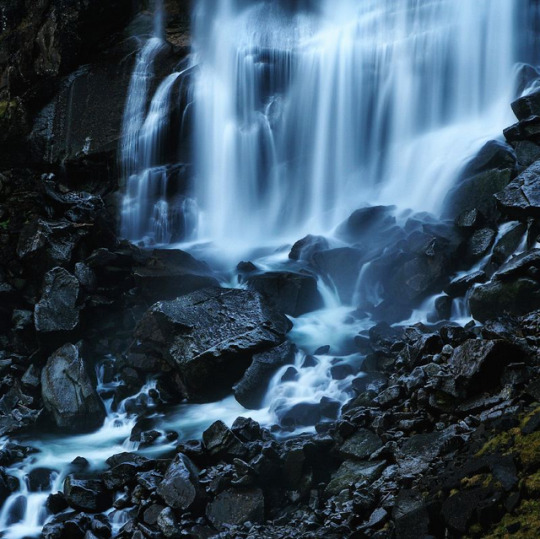
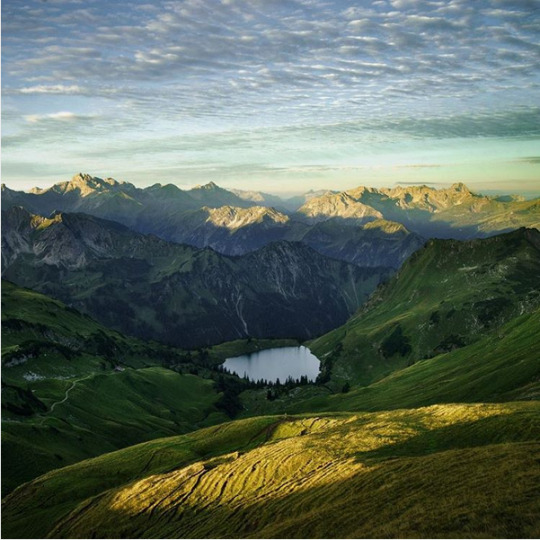

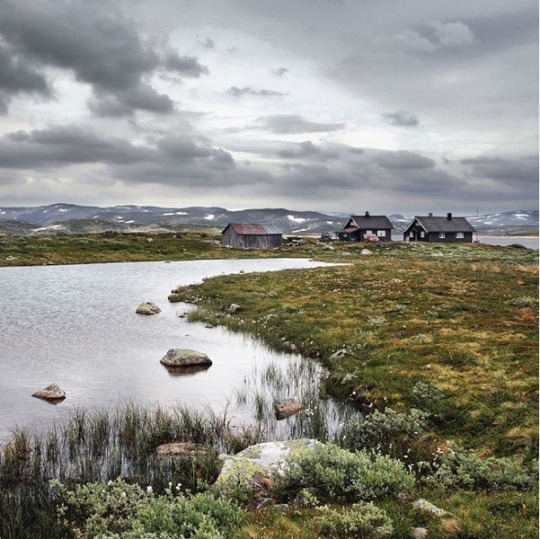

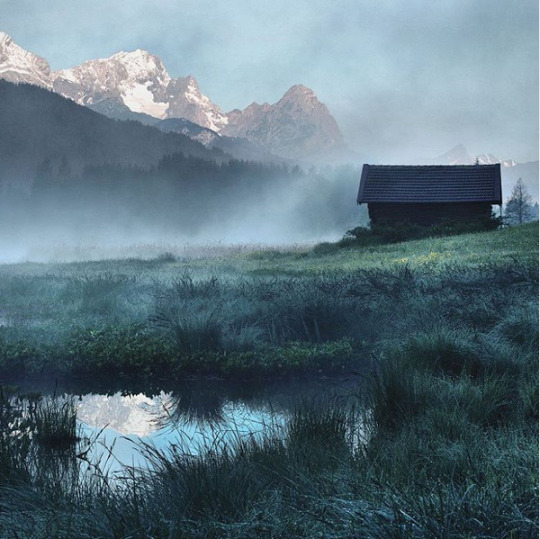
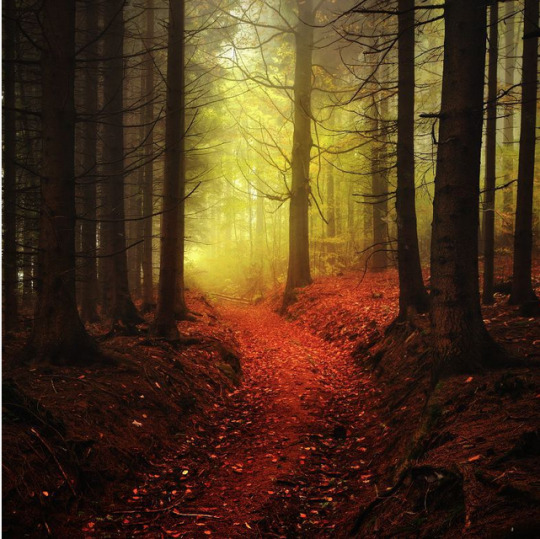











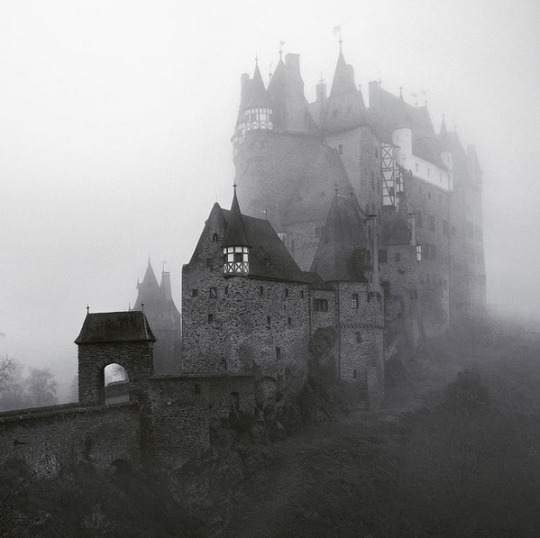

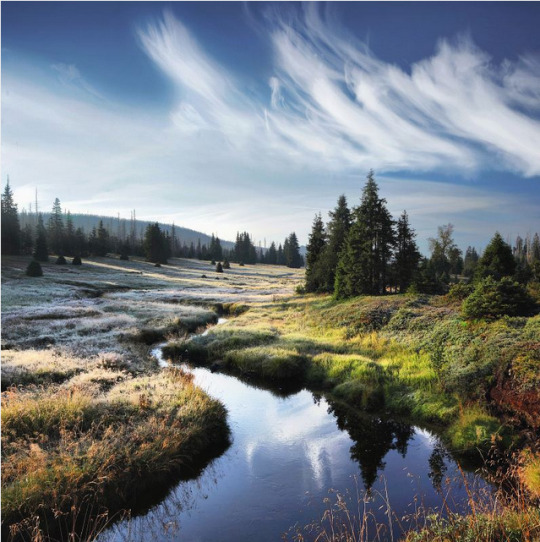
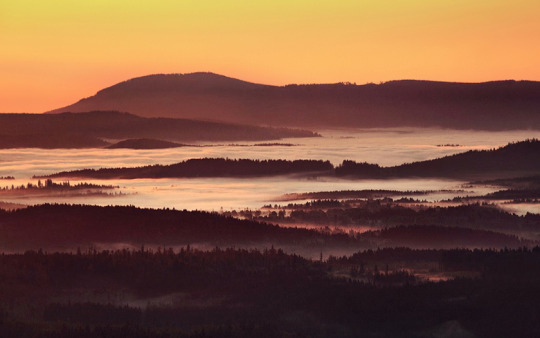




Photos and texts: @kilianschoenberger
1-. The Old Mill, Bavarian Forest. Germany
2-. Light & Shadow - Early morning in the Icelandic highlands
3-. Light & Shadow - hiking the czech-german borderlands. Germany
4-. Light & Shadow II - Sometimes light and some most can change the reality. Is it still a trunk or already a shadowy
5-. Monday Blues. Waterfall and frozen rocks in Norway near Hadangerfjord
6-. Morning Light. The first sunrays hits the mountains around lake Seealpsee in the Allgäuer Alps, Bavaria. Germany
7-. Morning tree. Big oak & low fog. Some early morning light
8-. Mountain Houses. Norway
9-. Mountain Monday. Beloved Dolomites
10-. Mountain Shack. The autumn fogs are dancing. Soon the last days of summer are gone. Bavaria. Germany
11-. Mysterious path leading straight into autumn. Eastern Bavaria, Germany
12-. Mysterious Valley - Czech Republic
13-. Northern Lights above a camping ground in Iceland
14-. Old beeches telling me old stories about the first days of this forest. Eastern Bavaria. Germany
15-. Rainy days. Little island somewhere in the Norwegian mountains
16-. Remembering Spring. Bluebells in the most western part of Germany
17-. Solitude. Apple tree in the Upper Palatinatian Forest (Oberpfälzer Wald). I grew up behind the hills at the horizon
18-. Some kind of Angkor Wat. When not knowing where to grow just grow on a doorframe
19-. Some rays. Always nice to see. Eastern Bavaria. Germany
20-. Sunrise above Benediktenwand, a mountain in the Bavarian Alps
21-. Swamp Reflection, Berlin. The wild heart of the city
22-. Swiss Alps seen from the Black Forest mountain range in Germany
23-. The Dark Castle. Eltz. Germany
24-. The floating castle - Hohenzollern, Germany
25-. The German-Czech borderland is where my Bavarian heart beats
0 notes
Photo

Annecy is a commune in the Haute-Savoie department in the Rhône-Alpes region in south-eastern France. It lies on the northern tip of Lake Annecy ,...
1 note
·
View note
Text
7 beautiful secret beaches in New Zealand
Hidden gems of seaside peace abound among New Zealand's stunning scenery, each with its own distinct charm. These hidden beaches, away from the tourist traps, exemplify New Zealand's natural beauty. The intriguing Black Pebble Beach, where ebony stones cover the immaculate beach, providing a striking and fascinating contrast against the turquoise seas, is one such well-kept secret.
Anapai Beach, located within Abel Tasman National Park, is even farther off the main path. This isolated refuge offers a private escape for those seeking tranquility in nature's embrace, with golden sands bordered by thick native shrubbery. Motunau Beach, on the eastern coast of the South Island, is a hidden gem with its broad sands and calm surroundings, making it a sanctuary for people seeking relaxation.
Traveling to the Coromandel Peninsula reveals the secretive New Chums Beach, which is only accessible by foot or boat. This undisturbed paradise, with its pure white beaches and turquoise seas, remains a well-kept secret, beckoning adventurous tourists to experience its natural splendour.
These hidden beaches, such as the enigmatic Black Pebble Beach, Anapai Beach, Motunau Beach, and New Chums Beach, whisper tales of New Zealand's coastal charm, enticing visitors to explore the island nation's hidden corners. These hidden havens provide a calm retreat into Aotearoa's natural beauty with every wave that caresses the coast.
Here are some beautiful secret beaches in New Zealand.
1. Black Pebble Beach, South Island, near Kaikoura: This beach is absolutely one-of-a-kind! Black Pebble Beach is located north of Kaikoura, near the village of Kekerengu. The Alps may be seen in the distance, and the beach is typically rather peaceful. Although not very 'hidden' from the tourist circuit, this is a sight not to be missed!
2. Anapai Beach, Abel Tasman National Park, North Island: The backpacker's bucket list includes a visit to Abel Tasman National Park. The national park, located at the northern point of New Zealand's north island, is home to beautiful bushwalks, beaches, and flora. Mutton Cove is located at the northernmost point of the Abel Tasman Great Walk. Mutton Cove, like many of New Zealand's hidden beaches, can only be reached by foot, boat, or kayak. If walking isn't your thing, you may take an aqua taxi to explore this isolated and scenic spot.
Allow 3 to 5 days to visit the entirety of Abel Tasman National Park; however, there are walking paths and beaches that may be found in a single day. There are a variety of campsites scattered around the national park for the adventurous. Before you leave, be sure to investigate walking times, weather, and camp site locations! The campground in Mutton Cove features running water, a fireplace, and a flush toilet.
3.Motunau Beach is located in north Canterbury, South Island: Motunau Beach is unique in that it is located along a stretch of rocky cliff faces and is a locals' hidden surf destination. Just north of Pegasus Bay, the beach is located around one-third of the way between Christchurch and Kaikoura. Make the most of the breathtaking views from the top of the cliff face. Motunau Island, previously a whaling outpost, is now a reserve with a variety of bird life, including the endangered white-flapped penguin.
4. Coromandel Peninsula's New Chums Beach: New Chum's Beach is unspoiled and only accessible by foot. Imagine beautiful sand, blue water, and native Pohutukawa trees (the New Zealand Christmas Tree)—only accessible to those prepared to embark on a one-hour forest journey. The north-east coast of the Coromandel Peninsula is a popular tourist destination. The higher north you go, the more isolated the shoreline becomes. To reach there, head to the northern end of Whangapua Beach from the Coromandel settlement. Continue down the shore, avoiding huge stones, until you find a rocky trail. Before arriving at New Chum's Beach, the trail will take you over the headland and through natural bush.
5. Awanah, North Island, and Great Barrier Island: Awanah Beach is a stunning surf beach on Great Barrier Island, which is approximately 100 kilometers from Auckland. The beach is located in a lush cove and is a well-kept secret within the New Zealand surf scene. Ferries go from Auckland to Great Barrier Island, and a campground is accessible 300m from Awanah Beach for people who wish to spend a day or two taking in the secluded beauty.
Read More: USA holiday packages from Dubai
6. Tapotupotu Bay, North Island, Cape Reinga: This is New Zealand's most accessible beach, and it is a sight not to be missed—white sand and green headlands. Allow one and a half hours to go north from Kaitaianorth to Tapotupotu. There is beach camping available. This undiscovered treasure is perfect for surfing, fishing, and hiking. From Paihia, take a daylong journey up to Cape Reinga.
7. Tawhitokino, Auckland, the North Island, and the South East: Tawhitokino is located half way between the settlements of here and Papanui, north of the Firth of Thames. This 1.4-kilometer-long stretch of unspoiled coastline is only accessible by boat, kayak, or foot. Allow one hour for the Tawhitokino trail, which is located at the end of Kawakawa Bay Coast Rd., right before Waiti Bay. The trail will take you along the coastlines of many beachfronts and across rickshaws; make sure you get to and from the beach during low tide!
After seeing New Zealand's gorgeous secret beaches, it's clear that these coastal hideaways are more than simply picturesque vistas; they're portals to a world of quiet and untouched natural beauty. The stunning coastal tale of New Zealand is defined by the fascination of Black Pebble Beach's unusual contrast, Anapai Beach's solitary beauty within Abel Tasman National Park, Motunau Beach's broad peacefulness, and the elusive New Chums Beach's pure attractiveness.
These secluded beaches offer an intimate connection with nature, allowing for periods of meditation and awe-inspiring beauty as tourists seek an escape from the mundane. The pristine landscapes, along with the repetitive symphonic symphony of the waves, offer an experience that goes beyond the conventional beach trip. Customized experiences await those who want to experience the enchantment of New Zealand's hidden coastal jewels with holiday packages from Dubai. These personalized experiences offer not just the discovery of undiscovered beaches but also an immersion into New Zealand's rich tapestry of culture, adventure, and natural beauty. A voyage unfolds in the embrace of these secluded shores, enabling tourists to enjoy the magic that distinguishes the unique beauty of New Zealand's coastal majesty. Travel beyond the ordinary with New Zealand holiday packages from Dubai, the doorway to the pristine beauty that awaits along Aotearoa's secret coasts.
Read More: Umrah package by bus from Dubai
Umrah package by Air from Dubai
1 note
·
View note
Text
Ybbstal Alps
Postcard from Germany.
The Ybbstal Alps are a mountain range of the Northern Limestone Alps and part of the Eastern Alps, located in Austria.
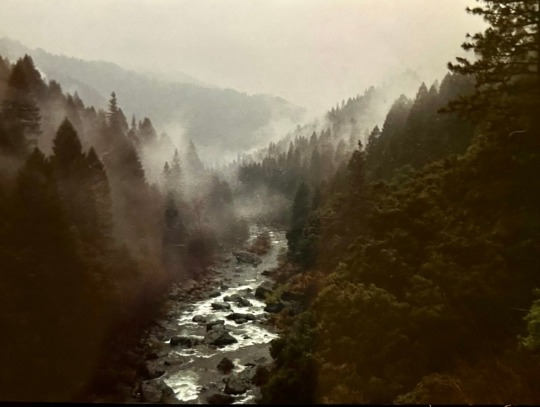
View On WordPress
0 notes
Text
Best Routes and Motorcycle Rental in New Zealand
There are numerous picture-perfect roads in New Zealand that demand to be traveled. Although some could choose to do this via automobile, a motorcycle is unquestionably the finest option. You can rent a motorcycle from a motorcycle rental in New Zealand and go on an exhilarating and difficult ride. The routes you can enjoy by riding on them are listed below.

Loop from Auckland to Clevedon
Local motorcyclists often have favorable opinions of rural Auckland. This particular route is centered around South Auckland and provides unmatched vistas of the Waikato River on the North Island. The State Highway 1 portion of the Auckland to Clevedon Loop travels south before turning left at Karaka, crossing a bridge to reach Waiuku, and finally crossing over to State Highway 2 to enter the Hunua Ranges and complete the ideal loop into Clevedon.
Crossing the Southern Alps by bicycle
The majestic landscapes and picturesque roadways of New Zealand's South Island tend to make people fall in love with it. There are many ways to visit the region's alpine beauties, but a self-guided tour could be the best option if you want to make the most of the diverse landscapes on display. A hand-picked route by South Pacific Motorcycle Tours includes many mountain crossings and stops at local attractions like Queenstown, Milford Sound, and the West Coast. It is an eight-day GPS-guided journey that riders may explore at their own pace.
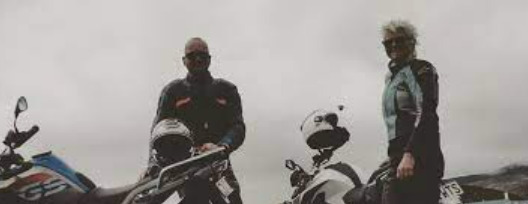
A loop in the Coromandel
Unquestionably, this is one of the most well-liked motorbike trips in New Zealand. Kiwis adore the Coromandel Loop's difficult, curving roads, which can be dangerous in some spots but are totally worth it if you want to test your driving prowess. The actual route is split into two sections, the 187.8-kilometer (117-mile) Northern Loop and the 129.7-kilometer (81-mile) Southern Loop, both of which offer quick access to the towns and attractions on the Coromandel Peninsula.
The Highway Along the Pacific
An excellent summer road trip that is well-liked by both motorists and motorcycle riders. Pacific Coast Highway on New Zealand's North Island runs from Auckland to Napier in Hawke's Bay, the country's epicenter of Art Deco. You'll see a lot of coastal jewels along the way, including the East Coast city of Gisborne, the Bay of Plenty region, and several charming beach communities on the Coromandel Peninsula.
Glenorchy to Queenstown
Drivers and bikers both adore a different option. This time, you'll be setting out from New Zealand's adventure epicenter directly into Lord of the Rings territory (Glenorchy, as you may know, served as a crucial setting for the creation of Isengard). Although the Queenstown to Glenorchy road is only 46 kilometers (29 miles) long, you should go slowly to really appreciate the surrounding landscape.
From Westport to Christchurch
A fantastic path for anyone looking to explore the TranzAlpine on two wheels. The Christchurch to Westport route travels from the eastern South Island shores to the wild landscapes of the West Coast subregion, much like the famous train journey; the main distinction is that the train arrives in Greymouth, while the road you'll be taking will take you a little bit higher up to the town of Westport via State Highway 7. Hanmer Springs, Lake Sumner Forest Park, and Nelson Lakes National Park are a few possible rest stops along the trip.
In summary, you can get a motorcycle from a motorcycle rental in New Zealand and enjoy your ride on lovely routes.
0 notes
Text
Wednesday, September 20, 2023 Canadian TV Listings (Times Eastern)
WHERE CAN I FIND THOSE PREMIERES?:
THE SUPER MODELS (Apple TV+)
NAKED ATTRACTION (discovery +)
AMERICAN HORROR STORY: DELICATE (FX Canada) 10:00pm
NEW TO AMAZON PRIME CANADA/CBC GEM/CRAVE TV/DISNEY + STAR/NETFLIX CANADA:
DISNEY + STAR
IRRESISTIBLE (Season 1)
MARVEL STUDIOS ASSEMBLED: THE MAKING OF SECRET INVASION
MIRACULOUS: TALES OF LADYBUG & CAT NOIR (Season 5)
NETFLIX CANADA
AMERICAN HUSTLE
HARD BROKEN (LB)
MURDAUGH MURDERS: A SOUTHERN SCANDAL
MLB BASEBALL
(SN) 2:00pm: Red Sox vs. Rangers
(SN Now) 2:00pm: Orioles vs. Astros
(SN1) 3:30pm: Mariners vs. A’s
(SN1/SN Now) 6:30pm: Angels vs. Rays
(SN) 7:00pm: Jays vs. Yankees
(SN1) 10:00pm: Tigers vs. Dodgers
MLS SOCCER
(TSN/TSN4/TSN5) 7:30pm: Miami vs. Toronto FC
(TSN/TSN4) 10:30pm: LA Galaxy vs. Minnesota
THE PASSIONATE EYE (CBC) 8:00pm Cyborg Society: Looking at the recent influx of AI technologies and considering if it is changing society.
FANTASTIC FRIENDS (CTV Life) 8:00pm: James and Oliver Phepls set out on a road trip to Lake Como with fellow motorcycle enthusiast Stan Ianevski; the brothers take their CBT through the vineyards of France, and the Swiss Alps, before eventually arriving in northern Italy.
BONES OF CROWS (CBC/APTN) 9:00pm (SERIES PREMIERE): Cree piano prodigy Aline Spears and her siblings are taken from their family home as children and forced into residential school. Spears, now a World War II code talker, and her husband, Adam Wallach, confront the spectres of their pasts.
SOUTHERN CHARM (Slice) 10:00pm (SEASON PREMIERE): The Charmers celebrate Madison's marriage to her Prince Charming, but everyone isn't in a festive mood; Austen comes face-to-face with multiple exes; Craig gets caught in the crossfire of an icy reunion between Shep and Taylor.
#cdntv#cancon#canadian tv#canadian tv listings#the passionate eye#fantastic friends#bones of crows#mlb baseball#mls soccer
0 notes
Photo

Annecy is a commune in the Haute-Savoie department in the Rhône-Alpes region in south-eastern France. It lies on the northern tip of Lake Annecy ,...
0 notes
Text
25 Best Place To Travel To In Europe In 2023

Certainly, here are the list with details of 25 of the Best Place To Travel In Europe
https://www.youtube.com/embed/0GZSfBuhf6Y
25 Best Place To Travel To In Europe
Paris, France:
- Eiffel Tower, Louvre, and Champs-Élysées: The Heart of Romance and Culture.
Rome, Italy:
- Colosseum, Vatican, and Pantheon: Walking Through Ancient History.
Barcelona, Spain:
- Gaudí's Masterpieces and Beach Vibes: The Catalan Gem.
Santorini, Greece:
- Whitewashed Beauty and Aegean Sunsets: Island Paradise.
Swiss Alps, Switzerland:
- Alpine Adventures and Breathtaking Landscapes: Nature's Playground.
Plitvice Lakes, Croatia:
- Cascading Waterfalls and Verdant Wilderness: A Natural Wonder.
Hallstatt, Austria:
- Alpine Tranquility and Lakeside Charm: Postcard-Perfect Village.
Cinque Terre, Italy:
- Coastal Marvels and Colorful Cliffside Towns: Italian Riviera Delight.
Bruges, Belgium:
- Canals, Chocolate, and Medieval Marvels: Fairytale Flemish City.
Florence, Italy:
- Renaissance Art, Uffizi Gallery, and Duomo: Cradle of Culture.
Amsterdam, Netherlands:
- Canals, Museums, and Tulips: Dutch Capital's Charms.
Vienna, Austria:
- Imperial Palaces, Classical Music, and Café Culture: Elegant Austrian Capital.
Bologna, Italy:
- Culinary Delights and Historic Beauty: Gastronomic Paradise.
Lyon, France:
- Gastronomy Capital and Presqu'île District: A Taste of France.
San Sebastián, Spain:
- Pintxos, Beaches, and Basque Beauty: Northern Spanish Gem.
Prague, Czech Republic:
- Charles Bridge, Prague Castle, and Old Town Square: Bohemian Elegance.
Dubrovnik, Croatia:
- Adriatic Gem and Ancient Walls: Pearl of the Adriatic.
Edinburgh, Scotland:
- Castle, Festivals, and Royal Mile: Scotland's Historic Crown.
Venice, Italy:
- Canals, Carnival, and Venetian Grandeur: Floating City's Allure.
Berlin, Germany:
- East Side Gallery, Brandenburg Gate, and Urban Cool: Modern Metropolis.
Lisbon, Portugal:
- Fado Music, Tram 28, and Belém Tower: Enchanting Coastal Capital.
Budapest, Hungary:
- Buda Castle, Thermal Baths, and Danube Panorama: Eastern European Gem.
Stockholm, Sweden:
- Gamla Stan, Vasa Museum, and Archipelago Beauty: Scandinavian Sophistication.
Dublin, Ireland:
- Literary Heritage, Temple Bar, and Dublin Castle: Lively Irish Capital.
Athens, Greece:
- Acropolis, Plaka, and Ancient History: Cradle of Western Civilization.
Each of these cities offers a unique blend of history, culture, architecture, and experiences that make them some of the best destinations to explore in Europe.
Also Read More about travelling topics
- Travel bags for men
- Travel bags for women
- Travel accessories
Read the full article
1 note
·
View note